Last October, Apple (AAPL) unveiled revolutionary processors, the M1 Pro and M1 Max, that brought desktop class performance to the new MacBook Pros. The PC world just yawned, pointing out that there were still CPUs and GPUs with more performance, even if they consumed vastly more power than Apple Silicon. But Apple wasn’t done. Apple’s new M1 Ultra shows how efficiency can translate into performance that even the latest Intel (INTC) desktop chips can’t match.
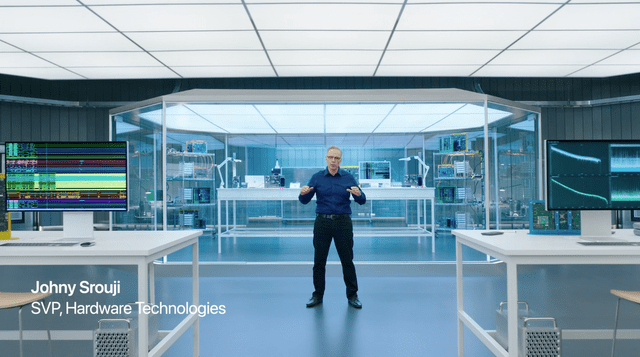
Apple
Apple
Apple’s processor guru introduces the M1 Ultra. Source: Apple.
There had been rumors floating around for some time that Apple had hidden a special die interconnect at the edge of the M1 Max that allowed two or even four M1 Max chips to be combined in a chiplet architecture. Those rumors turned out to be correct, at least for combining two chips. At Apple’s «Peek Performance» event on March 8, Apple unveiled the M1 Ultra. The M1 Ultra is two M1 Max chips joined through the special interface, called UltraFusion:
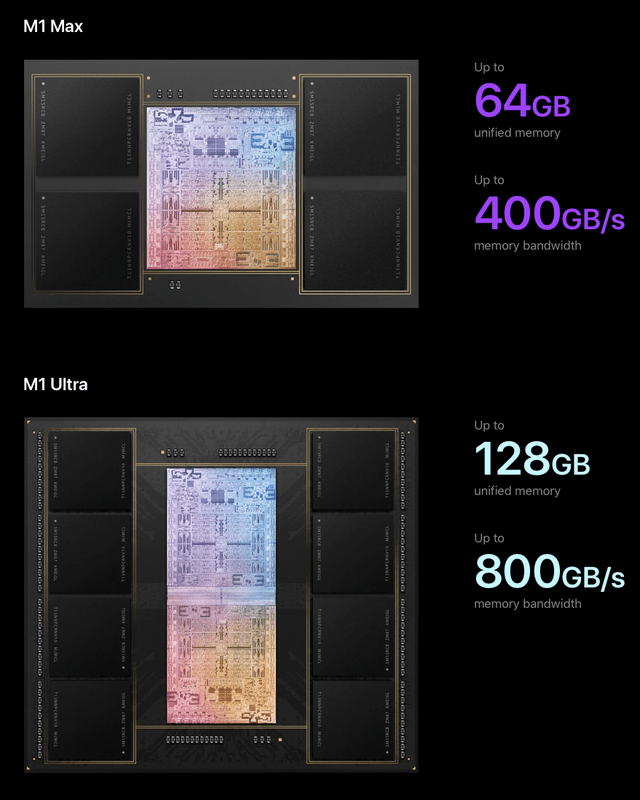
Apple
Apple
Source: Apple.
Everything simply doubles, including CPU and GPU cores, and memory capacity and bandwidth. The M1 Pro and Max had a relatively modest complement of 8 single threaded CPU Performance Cores, and this provided solid mid-range desktop level performance, but high end desktops from Intel or AMD (AMD) often feature 16 or more double-threaded cores. With 16 Performance Cores, M1 Ultra beats the highest performance Intel Alder Lake desktop chip, the Core i9-12900K in multicore benchmarks according to Apple:
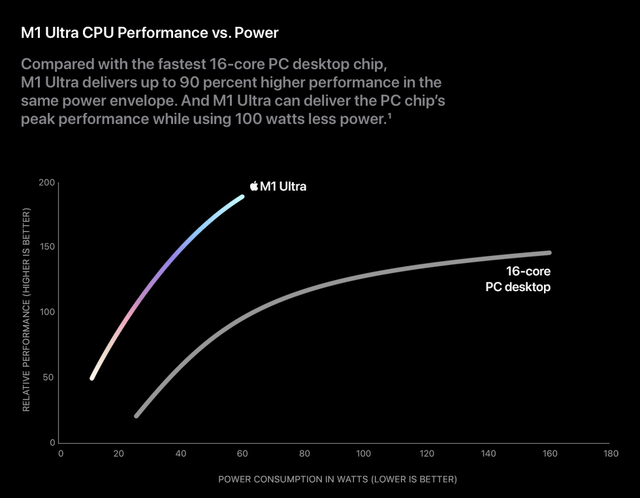
Apple
Apple
Source: Apple
This claim actually makes sense for Geekbench multicore. The 12900K scores about 17,000 points, while the M1 Max scores about 12,000. Doubling the performance cores of the M1 Max won’t double the multicore score, but it will probably increase it by about 80% to 22,000, in line with Apple’s chart.
Of course, real world performance is another matter, but the massive memory bandwidth of the M1 Ultra should allow it to perform well in a wide variety of tasks. About the only area where Alder Lake will outperform the Ultra is in single core performance.
Apple chose to package the M1 Ultra in a form factor derived from the Mac Mini called the Mac Studio. It’s a very powerful system, but certainly not something that will appeal to PC enthusiasts. Instead, Apple is targeting its core constituency of «creative professionals»:

Apple
Apple
Apple wants to transform your studio. Source: Apple.
Last October, I wrote Apple Is About To Change The World Again, and I wasn’t disappointed by the «Unleashed» event that unveiled the new MacBook Pros. I bought a 16 inch MacBook Pro with the M1 Pro processor and have used and tested it extensively. I had been concerned that in scaling up the performance of the humble M1, Apple would have to give up some of its amazing efficiency, but the M1 Pro proved virtually identical in efficiency to the M1 while nearly doubling its performance.
The MacBook Pro has become my main home office computer, able to replace my Intel desktop at less than 1/4th the power consumption. The Mac tech review community were also similarly impressed, but that’s about as far as it went.
Mainstream PC reviewers basically ignored the efficiency advantage of Apple Silicon, preferring to focus on absolute performance, where there were always Intel or AMD chips that could do better. And as far as GPU performance was concerned, there was really no way for Apple Silicon to compete with discrete laptop GPUs from Nvidia (NVDA), let alone the desktop versions.
Then, Intel announced Alder Lake for laptops at CES. Intel was very explicit in its targeting of Apple Silicon in its media slide deck:
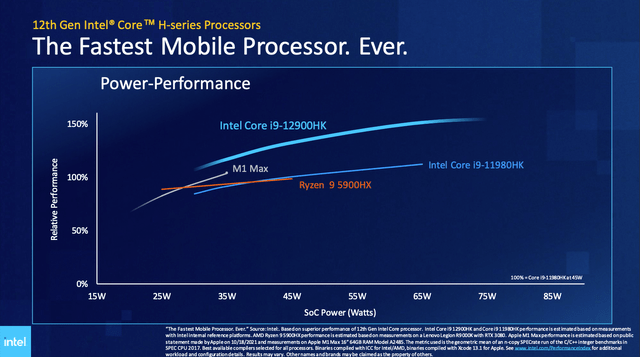
Intel
Intel
Just to make sure everyone got this message, it was repeated in Three. Separate. Places. But efficiency was quietly forgotten, and early laptops such as the MSI GE76 that use the laptop version of Alder Lake were obese monsters that were largely unusable when not plugged in.
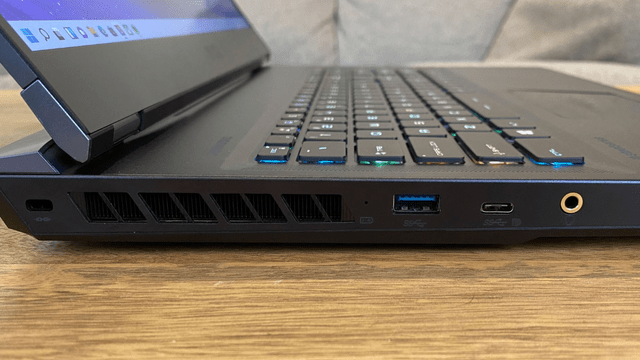
Tom’s Hardware
Tom’s Hardware
Source: Tom’s Hardware MSI GE76 Review.
As I pointed out in my article on the Alder Lake laptop processor, Intel achieved its industry leading single core performance for Alder Lake by creating a package that would allow the chips to run at their rated Turbo Frequency indefinitely. In previous generations of Intel processors, Turbo Mode could only be sustained for roughly a minute before the processors would overheat.
The price of unlimited Turbo Mode was that the processors would now consume enormous amounts of power. The Maximum Turbo power of the desktop i9-12900K is 241 W, and for the laptop 12900HK it’s 115 W. But these chips will sustain Turbo Mode indefinitely as long as the system can supply enough power and cooling.
The use of Turbo Mode is really an act of desperation, and in many ways, a step backward in the long progression of electronic computing systems. Ever since the era of vacuum tubes, computer architecture has always gravitated towards more energy efficient devices and systems. This has always been the way that sustainable performance gains were achieved.
Turbo Mode reminds me a little of what we’re seeing in the reaction to Tesla (TSLA) Model S Plaid. The Model S Plaid is easily the world’s quickest production four door sedan, with a 0-60 mph time of 1.99 seconds.
It’s possible, and some have done so, to create internal combustion engine cars that can beat the Model S Plaid in a drag race. It requires extreme measures, such as supercharging, nitrous oxide injection, and just plain huge engines.
But that doesn’t make the internal combustion engine any less obsolete. On the contrary, the extremity of the measures required to make ICEs competitive only underscores their obsolescence.
With so much of the mainstream tech media suitably unimpressed by the new MacBook Pros (and Apple Silicon in general), financial analysts started low balling Mac sales estimates and financial results for the December quarter. It started with IDC’s and Gartner’s PC unit sales estimates.
Both firms estimated that Apple had grown Mac unit shipments by 18% or more for the entire year. Yet, almost inexplicably, despite the introduction of the new MacBook Pros last October, Gartner estimated Mac unit shipment growth at just 6.2% in calendar Q4, while IDC estimated Mac unit growth at 8.6%.
Analyst financial expectations for the December quarter were similarly pessimistic. In my article on Apple’s fiscal 2022 Q1 results, I compared my estimates to those of a number of Apple analysts interviewed by Apple Insider:

Mark Hibben and Apple Insider
Mark Hibben and Apple Insider
The Mac was the fastest growing in revenue y/y of all the segments Apple reports and set an all-time quarterly revenue record:

Mark Hibben from Apple financial reports.
Mark Hibben from Apple financial reports.
Was the higher Mac revenue due to enormous ASP growth? I doubt it. The new MacBook Pros were priced comparably to the Intel models they replaced. Most likely, the Mac unit shipment estimates for the December quarter were simply wrong.
There’s a strong bias in the mainstream tech media that says that Apple can never make any difference in personal computing, that it will always be a niche player. To continue to believe that is to ignore the technological revolution that Apple is creating with Apple Silicon.
Beyond the M1 generation, I believe the M2 generation will use TSMC’s (TSM) 3 nm process in 2023. The M2 series will start, as M1 did, with a single chip M2 and build up from there.
While the performance of Apple Silicon will continue to win converts, Apple’s PC share gains are likely to be held back somewhat by the cost of its systems. A fully spec’d Mac Studio runs over $6000. I didn’t see Apple present a compelling use case for the Studio compared to, say, the new MacBook Pro, or even the Studio with M1 Max.
The unfortunate reality for Apple is that the most demanding consumer activity for PCs is gaming. And as multiple tests have shown, Apple is more or less shut out of the PC gaming market. There just aren’t that many PC games that have been ported to macOS. With Apple’s more powerful processors, that will change, but it will take time.
What Apple Silicon has going for it is that it’s on the side of history. The historical trend is clearly in favor of ever more efficient computing platforms. Greater efficiency invariably translates to greater performance. We’ve seen that with the M1 Pro and Max and now M1 Ultra.
X86 has already lost the efficiency competition, and it’s never going to recover. Soon, it will lose the absolute performance competition as well. After that, the only thing x86 will have going for it is legacy software compatibility, which is not a trivial advantage, but it will diminish over time.
Investors should seriously consider a future where Apple is as dominant in personal computing as it is in smartphones. That doesn’t mean that Apple will sell the most personal computers. Apple doesn’t sell the most smartphones. But it does take the most profit in the smartphone industry. Apple could do the same to the personal computer industry. I remain long Apple and rate it a Buy.

Nikada/iStock Unreleased via Getty Images
Consider joining Rethink Technology for in depth coverage of technology companies such as Apple.
This article was written by
Disclosure: I/we have a beneficial long position in the shares of AAPL, NVDA, TSM either through stock ownership, options, or other derivatives. I wrote this article myself, and it expresses my own opinions. I am not receiving compensation for it (other than from Seeking Alpha). I have no business relationship with any company whose stock is mentioned in this article.












